Balkinization
an unanticipated consequence of
Jack M. Balkin
Balkinization Symposiums: A Continuing List
E-mail:
Jack Balkin:
jackbalkin at yahoo.com
Bruce Ackerman
bruce.ackerman at yale.edu
Ian Ayres
ian.ayres at yale.edu
Corey Brettschneider
corey_brettschneider at brown.edu
Mary Dudziak
mary.l.dudziak at emory.edu
Joey Fishkin
joey.fishkin at gmail.com
Heather Gerken heather.gerken at yale.edu
Abbe Gluck abbe.gluck at yale.edu
Mark Graber
mgraber at law.umaryland.edu
Stephen Griffin
sgriffin at tulane.edu
Jonathan Hafetz
jonathan.hafetz at shu.edu
Jeremy Kessler
jkessler at law.columbia.edu
Andrew Koppelman
akoppelman at law.northwestern.edu
Marty Lederman
msl46 at law.georgetown.edu
Sanford Levinson
slevinson at law.utexas.edu
David Luban
david.luban at gmail.com
Gerard Magliocca
gmaglioc at iupui.edu
Jason Mazzone
mazzonej at illinois.edu
Linda McClain
lmcclain at bu.edu
John Mikhail
mikhail at law.georgetown.edu
Frank Pasquale
pasquale.frank at gmail.com
Nate Persily
npersily at gmail.com
Michael Stokes Paulsen
michaelstokespaulsen at gmail.com
Deborah Pearlstein
dpearlst at yu.edu
Rick Pildes
rick.pildes at nyu.edu
David Pozen
dpozen at law.columbia.edu
Richard Primus
raprimus at umich.edu
K. Sabeel Rahmansabeel.rahman at brooklaw.edu
Alice Ristroph
alice.ristroph at shu.edu
Neil Siegel
siegel at law.duke.edu
David Super
david.super at law.georgetown.edu
Brian Tamanaha
btamanaha at wulaw.wustl.edu
Nelson Tebbe
nelson.tebbe at brooklaw.edu
Mark Tushnet
mtushnet at law.harvard.edu
Adam Winkler
winkler at ucla.edu
Compendium of posts on Hobby Lobby and related cases
The Anti-Torture Memos: Balkinization Posts on Torture, Interrogation, Detention, War Powers, and OLC
The Anti-Torture Memos (arranged by topic)
Recent Posts
Insurrections in the Nineteenth Century: Real and Imagined
Just A Few Blogs
ACS Blog
Alas, a Blog
Althouse
Arts and Letters Daily
Atrios (Eschaton)
Bill of Health
Buzzflash.com
Buzz Machine
Cato at Liberty
Juan Cole (Informed Comment)
Concurring Opinions
The Constitution in 2020
Corrente
Crooked Timber
Daily Howler
Daily Kos
Dana Boyd
Brad DeLong
Digby (Hullabaloo)
Discriminations
Daniel Drezner
Kevin Drum (Mother Jones)
Electrolite
En Banc
Eunomia (Daniel Larison)
Fafblog
Michael Froomkin (Discourse.net)
GovLab (Beth Noveck)
Rick Hasen (Election Law)
History News Network
How Appealing
Ignatz (Sam Heldman)
The Importance of (Ernie Miller)
Infolaw
Instapundit
International Economic Law and Policy Blog
IntLawGrrls
Jacob Levy
Jesus' General
Jurisdynamics
The Kitchen Cabinet
Mark Kleiman
Law Blog Central
Larry Lessig
Lawyers, Guns and Money
Liberal Oasis
Brian Leiter's Law School Reports
The Leiter Reports
Marginal Revolution
Megan McArdle
Memeorandum
Metafilter
Mirror of Justice
The New Republic
Newseum
No More Mister Nice Blog
Brendan Nyhan
Opinio Juris
Orcinus
The Originalism Blog
Pandagon
Passport (Foreign Policy)
Overcoming Bias
Political Animal (Washington Monthly)
Political Theory Daily Review
Political Wire (Taegan Goddard)
The Poor Man
Virginia Postrel
Prawfsblawg
Public Reason
Jonathan Rauch
Raw Story
Redstate
ReligiousLeftLaw.com
Reporters Committee For Freedom of the Press
Reproductive Rights Blog
Rothman's Roadmap to the Right of Publicity
SCOTUS Blog
Seeing the Forest
Clay Shirky
The Shifted Librarian
The Situationist
Larry Solum (Legal Theory)
Andrew Sullivan
Talking Points Memo
Talk Left
Tapped
Tbogg
TechPresident
The Paper Chase (Jurist)
Tom Paine
Tom Tomorrow (This Modern World)
Eve Tushnet
Uggabugga
University of Chicago Law School Faculty Blog
Unqualified Offerings
The Volokh Conspiracy
War and Piece (Laura Rozen)
Wampum
Oliver Willis
Wonkette
Written Description
Matthew Yglesias
Yin
Your Choice of Feeds
1. XML
powered by
2. Atom Feed
3. RSS 2.0
Insurrections in the Nineteenth Century: Real and Imagined
Mark Graber
Charging a grand jury in Rhode
Island after the Dorr Rebellion, Supreme Court Justice Joseph Story elaborated
on the well-established common/constitutional law of treason and
insurrection. The Massachusetts jurist
declared. it is
not necessary, that it should be a direct and positive intention entirely to
subvert or overthrow the government. It will be equally treason, if the
intention is by force to prevent the execution of any one or more general and
public laws of the government, or to resist the exercise of any legitimate
authority of the government in its sovereign capacity. Thus, if there is an
assembly of persons with force, with an intent to prevent the collection of the
lawful taxes or duties, levied by the government,—or to destroy all
customhouses,—or to resist the administration of justice in the courts of the
United States, and they proceed to execute their purpose by force,—there can be
no doubt, that it would be treason against the United States. Story’s analysis was commonplace from the ratification of the
Constitution until the end of Reconstruction.
Five Supreme Court opinions, Twelve Supreme Court judicial opinions on
circuit, ten other federal judicial opinions, more than ten legal treatises,
and more than ten state court opinions offered similar analyses of the
common/constitutional law of treason and insurrection. John Marshall, Benjamin Curtis, Stephen Field,
Francis Lieber, Nathan Dane, William Alexander Duer and Simon Greenleaf were
among the legal luminaries who championed the understand of treason and
insurrection that Republicans during Reconstruction constitutionalized when
framing and ratifying Section Three of the Fourteenth Amendment. I have discovered only one relative minor
legal treatise published before 1866 that dissents from this consensus. Constitutional lawyers when Section Three of the Fourteenth Amendment was
framed recognized that an insurrection involved a) an assemblage, b) resisting
any federal law or interfering with the course of a federal proceeding, c) by
force or intimidation, d) for a public purpose.
Not every writing laid out all four of these elements, but with the
exception of one criminal law treatise, none offered a rival account of the
common/constitutional law of treason and insurrection. Variations exists, but none are germane to
whether an insurrection took place on January 6, 2021. The events of January 6 satisfy the nineteenth century conditions
for an insurrection. An assemblage formed. The crowd was far greater in numbers
than the mobs that assaulted federal officials during the Whiskey and Fries
Insurrections. The assemblage was
resisting both federal law and the legitimate authority of the government in
its sovereign capacity. The mob that stormed the Capital was attempting to
prevent the lawful transition of power from Donald Trump to Joseph Biden. The resistance was by
force, violence, and intimidation. The
mob injured police officers and threatened to murder government officials. The assemblage
had a public purpose. Members believed
the election had been stolen. They were
not there to take congressional furniture to sell on Ebay. Chief Justice John Marshall in the wake of the Burr Rebellion explained who was an insurrectionist. His opinion in Ex parte
Bollman (1807) asserted, “if a body of men be actually assembled for the purpose of
effecting by force a treasonable purpose, all of those who perform any part,
however minute or remote from the scene of action, and who are actually leagued
in the general conspiracy, are to be considered as traitors.” One member of Congress noted during the Civil War that if a person
knowingly sold a pair of shoes to a confederate soldier knowing those shoes
would be used in battle, then the shoe salesperson was an insurrectionist for
constitutional purposes. The
Blackstonian principle that in treason all are principles was repeated in numerous
judicial opinions and legal commentaries from the ratification of the
Constitution to the end of Reconstruction.
A person who merely aids and abets or solicits a murder is not a
murderer, but the common/constitutional law of insurrection and treason during
the Civil War declared a person who aided and abetted or solicited an
insurrection to be an insurrectionist. I
have discovered only one dissent from that consensus and that person appears to
have changed his mind during the Civil War. Speakers had no automatic constitutional immunity from treason
and insurrection prosecutions. Supreme Court Justice Benjamin Curtis on circuit informed a grand jury that treason or insurrection was
committed by “every one who counsels, commands, or procures others to commit an
overt act of treason, which is accordingly committed.” Judge John Kane declared that “successfully
to instigate treason is to commit it.” Judges and legal commentators disputed the relationship between speech and treason, with general agreement that “mere
words” were not sufficient. With only
one clear exception, however, all legal commentators before the Civil War
agreed that incitement to insurrection was insurrectionary behavior if the
incitement was acted upon. Much speech
we consider constitutionally protected they thought treasonous. The Brandenburg v. Ohio (1969) rule
that the speech must be incitement to immediate violence was for the distant
future. Donald Trump is the paradigmatic person the persons responsible for
Section Three of the Fourteenth Amendment would have disqualified for engaging
in an insurrection. Trump, the evidence
indicates, instigated the attack on Congress. At a minimum, he inflamed an angry mob and then refused to
use his powers to protect Representatives and Senators. A
case might be made that Trump’s behavior is protected by contemporary First Amendment
doctrine, although most free speech experts think otherwise. No reasonable case can be made that prominent
Republicans in 1866 would have thought Trump’s words and actions
constitutionally protected. Those who oppose disqualification champion an alternative means for
determining what engaging in an insurrection meant in the nineteenth century. Rather than engaging with John Marshall,
Joseph Story, Benjamin Curtis, other judges of the time, and the legal literature, they prefer the
method of deep contemplation. On the assumption
that the framers thought long and hard about insurrections, Ross Douthat,
Steven Calabresi and others, have apparently concluded that if they think long
and hard about insurrections, their thoughts will mirror those of
Reconstruction Republicans. That mirror is cracked. Several contemporary
commentators, for example, deduce from the frequent tendency of nineteenth
century legal commentators to speak of “insurrections or rebellions,” that “insurrection”
and “rebellion” must have had the same or similar meaning. A review of such queries as “soup or salad”
or “plastic or paper” might have disabused them of this notion, but maybe they prefer to eat in or have others do their shopping. To be fair, “insurrection” and “rebellion”
were treated as synonymous by an Alabama opinion in 1837. Nevertheless, the far more common view distinguished a “rebellion” from “a
mere insurrection.” Cases and commentators described vital gradations between rebellions and insurrections or between insurrections. The Supreme Court of the United States in The Amy
Warwick (1863) described the Civil War as “no loose, unorganized
insurrection, having no defined boundary or possession.” Numerous state cases quoted or paraphrased this passage when distinguished full
scale rebellions from more local insurrections. Senator Willard Saulsbury of
Delaware maintained that an “insurrection is . . . the act of unorganized
individuals” as opposed to rebellions which required “States or organized
political communities.” Close
your eyes, think deep thoughts, delete any reference to nineteenth century matters
on your computer and you might imagine, as some commentators have, that an
insurrection has to be of a certain duration, a certain scope, have a certain
probability of success, and more generally resemble the Civil War. All this is reasonable. The only problem is history. The common/constitutional law of insurrection
and treason, as noted above, had no duration, scope, or probability of success
requirements. Judge Kane in Hanway v.
United States stated, “the quantum of the force employed
neither lessens nor increases the crime, whether by one hundred or one thousand
persons is wholly immaterial.” “[I]t is
altogether immaterial,” he continued, “whether the force used is sufficient to
effectuate the object; any force connected with the intention, will constitute
the crime of ‘levying war.’ Nineteenth
century jurists did not measure an insurrection by the probability of victory. Justice Stephen Field’s charge in Greathouse
v. United States asserted, “[i]t is
not essential to constitute the giving of aid and comfort that the enterprise
commenced should be successful and actually render assistance.” Another
ahistorical move is the claim that the Constitution distinguishes between
inciting an insurrection and engaging in an insurrection. The basis of this claim is Section Two of the
Second Confiscation Act, which punishes those who “incite, set on foot, assist,
or engage” in an insurrection. Close your eyes, burn all copies of the Congressional Globe, and you might imagine
this section states four separate offenses, all of which differ from treason,
which is punished in Section One of the Second Confiscation Act. Substitute history for imagination and a
different interpretation emerges. Republicans
during the debate over Section Two explicitly stated that the provision does
not set out four separate offenses, each of which is different from the treason
punished in Section One. Senators verbally
agreed with Jacob Howard of Michigan when he declared that there is "no distinction between inciting a rebellion or insurrection, setting on foot a rebellion or insurrection, assisting in a rebellion or insurrection, or engaging in a rebellion or insurrection." The sponsors of Section Two agreed that each
of these offenses was treason, which was also punished by Section One. The point of Section Two and related
provisions in the Second Confiscation Act was to enable juries to convict
persons of insurrection without mandating the death penalty and forestall any
judicial attempt to narrow the accepted definition of insurrection. This is why Republicans provided the same
punishments for persons who incite, set on foot, assist, or engage in
insurrections and disqualified all such persons from holding office. (Has anyone noted that if "engaged in insurrection" in Section Two of the Second Confiscation Act differs from "treason" in Section One, then Robert E. Lee could claim that he was not disqualified under Section Three of the Fourteenth Amendment because he was a traitor and not an insurrectionist.) Constitutional
analysis that begins with how Reconstruction Republicans thought about
insurrection need not end with nineteenth century thinking. That the persons responsible for Section
Three of the Fourteenth Amendment thought persons who violently resisted for
principled reasons the parking laws in Washington, D.C., sold shoes to Confederate
soldiers, and wished Jefferson Davis a happy birthday (I’m not making this up)
were traitors does not compel contemporary citizens of the United States to
reach the same conclusion. We might
limit insurrections to more consequential laws, insist on more consequential
participation, and demand far greater protection for free speech. When we do so, however, we should acknowledge
that we are interpreting the words of Section Three in light of contemporary values
and make no pretense that we are channeling the original meaning of the Fourteenth
Amendment. And we should take very
seriously the possibility that even on a revised understanding of insurrection
rooted in contemporary values a powerful case is being made that persons who
incite a mob to prevent by violence the peaceful transition of presidential
power ought not be eligible to exercise official power in the United States.
Posted
8:45 AM
by Mark Graber [link]
Books by Balkinization Bloggers

Linda C. McClain and Aziza Ahmed, The Routledge Companion to Gender and COVID-19 (Routledge, 2024)

David Pozen, The Constitution of the War on Drugs (Oxford University Press, 2024)

Jack M. Balkin, Memory and Authority: The Uses of History in Constitutional Interpretation (Yale University Press, 2024)
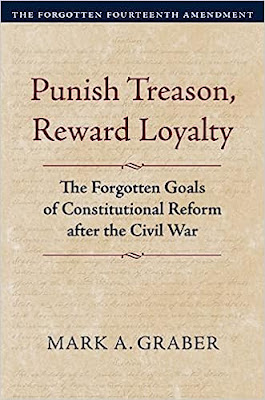
Mark A. Graber, Punish Treason, Reward Loyalty: The Forgotten Goals of Constitutional Reform after the Civil War (University of Kansas Press, 2023)
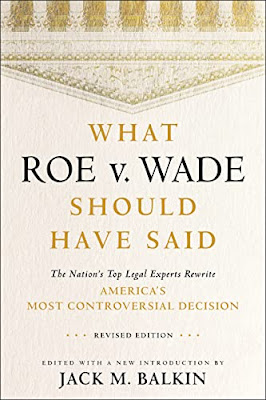
Jack M. Balkin, What Roe v. Wade Should Have Said: The Nation's Top Legal Experts Rewrite America's Most Controversial Decision - Revised Edition (NYU Press, 2023)

Andrew Koppelman, Burning Down the House: How Libertarian Philosophy Was Corrupted by Delusion and Greed (St. Martin’s Press, 2022)

Gerard N. Magliocca, Washington's Heir: The Life of Justice Bushrod Washington (Oxford University Press, 2022)
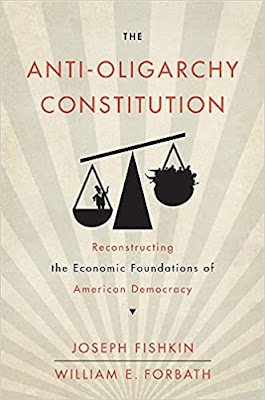
Joseph Fishkin and William E. Forbath, The Anti-Oligarchy Constitution: Reconstructing the Economic Foundations of American Democracy (Harvard University Press, 2022)
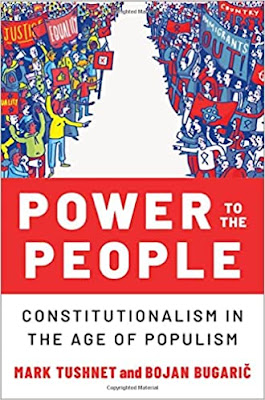
Mark Tushnet and Bojan Bugaric, Power to the People: Constitutionalism in the Age of Populism (Oxford University Press 2021).

Mark Philip Bradley and Mary L. Dudziak, eds., Making the Forever War: Marilyn B. Young on the Culture and Politics of American Militarism Culture and Politics in the Cold War and Beyond (University of Massachusetts Press, 2021).

Jack M. Balkin, What Obergefell v. Hodges Should Have Said: The Nation's Top Legal Experts Rewrite America's Same-Sex Marriage Decision (Yale University Press, 2020)

Frank Pasquale, New Laws of Robotics: Defending Human Expertise in the Age of AI (Belknap Press, 2020)

Jack M. Balkin, The Cycles of Constitutional Time (Oxford University Press, 2020)

Mark Tushnet, Taking Back the Constitution: Activist Judges and the Next Age of American Law (Yale University Press 2020).

Andrew Koppelman, Gay Rights vs. Religious Liberty?: The Unnecessary Conflict (Oxford University Press, 2020)

Ezekiel J Emanuel and Abbe R. Gluck, The Trillion Dollar Revolution: How the Affordable Care Act Transformed Politics, Law, and Health Care in America (PublicAffairs, 2020)

Linda C. McClain, Who's the Bigot?: Learning from Conflicts over Marriage and Civil Rights Law (Oxford University Press, 2020)
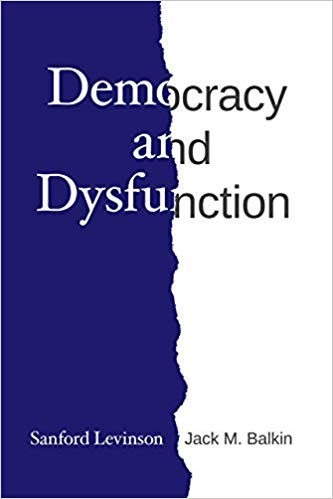
Sanford Levinson and Jack M. Balkin, Democracy and Dysfunction (University of Chicago Press, 2019)

Sanford Levinson, Written in Stone: Public Monuments in Changing Societies (Duke University Press 2018)

Mark A. Graber, Sanford Levinson, and Mark Tushnet, eds., Constitutional Democracy in Crisis? (Oxford University Press 2018)

Gerard Magliocca, The Heart of the Constitution: How the Bill of Rights became the Bill of Rights (Oxford University Press, 2018)

Cynthia Levinson and Sanford Levinson, Fault Lines in the Constitution: The Framers, Their Fights, and the Flaws that Affect Us Today (Peachtree Publishers, 2017)

Brian Z. Tamanaha, A Realistic Theory of Law (Cambridge University Press 2017)

Sanford Levinson, Nullification and Secession in Modern Constitutional Thought (University Press of Kansas 2016)

Sanford Levinson, An Argument Open to All: Reading The Federalist in the 21st Century (Yale University Press 2015)

Stephen M. Griffin, Broken Trust: Dysfunctional Government and Constitutional Reform (University Press of Kansas, 2015)

Frank Pasquale, The Black Box Society: The Secret Algorithms That Control Money and Information (Harvard University Press, 2015)

Bruce Ackerman, We the People, Volume 3: The Civil Rights Revolution (Harvard University Press, 2014)
Balkinization Symposium on We the People, Volume 3: The Civil Rights Revolution

Joseph Fishkin, Bottlenecks: A New Theory of Equal Opportunity (Oxford University Press, 2014)

Mark A. Graber, A New Introduction to American Constitutionalism (Oxford University Press, 2013)

John Mikhail, Elements of Moral Cognition: Rawls' Linguistic Analogy and the Cognitive Science of Moral and Legal Judgment (Cambridge University Press, 2013)

Gerard N. Magliocca, American Founding Son: John Bingham and the Invention of the Fourteenth Amendment (New York University Press, 2013)

Stephen M. Griffin, Long Wars and the Constitution (Harvard University Press, 2013)

Andrew Koppelman, The Tough Luck Constitution and the Assault on Health Care Reform (Oxford University Press, 2013)

James E. Fleming and Linda C. McClain, Ordered Liberty: Rights, Responsibilities, and Virtues (Harvard University Press, 2013)
Balkinization Symposium on Ordered Liberty: Rights, Responsibilities, and Virtues

Andrew Koppelman, Defending American Religious Neutrality (Harvard University Press, 2013)

Brian Z. Tamanaha, Failing Law Schools (University of Chicago Press, 2012)

Sanford Levinson, Framed: America's 51 Constitutions and the Crisis of Governance (Oxford University Press, 2012)

Linda C. McClain and Joanna L. Grossman, Gender Equality: Dimensions of Women's Equal Citizenship (Cambridge University Press, 2012)

Mary Dudziak, War Time: An Idea, Its History, Its Consequences (Oxford University Press, 2012)

Jack M. Balkin, Living Originalism (Harvard University Press, 2011)

Jason Mazzone, Copyfraud and Other Abuses of Intellectual Property Law (Stanford University Press, 2011)

Richard W. Garnett and Andrew Koppelman, First Amendment Stories, (Foundation Press 2011)

Jack M. Balkin, Constitutional Redemption: Political Faith in an Unjust World (Harvard University Press, 2011)

Gerard Magliocca, The Tragedy of William Jennings Bryan: Constitutional Law and the Politics of Backlash (Yale University Press, 2011)

Bernard Harcourt, The Illusion of Free Markets: Punishment and the Myth of Natural Order (Harvard University Press, 2010)

Bruce Ackerman, The Decline and Fall of the American Republic (Harvard University Press, 2010)
Balkinization Symposium on The Decline and Fall of the American Republic

Ian Ayres. Carrots and Sticks: Unlock the Power of Incentives to Get Things Done (Bantam Books, 2010)

Mark Tushnet, Why the Constitution Matters (Yale University Press 2010)
Ian Ayres and Barry Nalebuff: Lifecycle Investing: A New, Safe, and Audacious Way to Improve the Performance of Your Retirement Portfolio (Basic Books, 2010)
.jpg)
Jack M. Balkin, The Laws of Change: I Ching and the Philosophy of Life (2d Edition, Sybil Creek Press 2009)

Brian Z. Tamanaha, Beyond the Formalist-Realist Divide: The Role of Politics in Judging (Princeton University Press 2009)
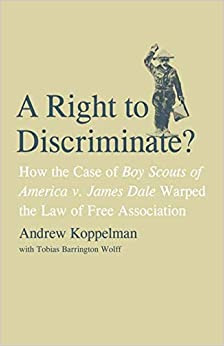
Andrew Koppelman and Tobias Barrington Wolff, A Right to Discriminate?: How the Case of Boy Scouts of America v. James Dale Warped the Law of Free Association (Yale University Press 2009)

Jack M. Balkin and Reva B. Siegel, The Constitution in 2020 (Oxford University Press 2009)
Heather K. Gerken, The Democracy Index: Why Our Election System Is Failing and How to Fix It (Princeton University Press 2009)

Mary Dudziak, Exporting American Dreams: Thurgood Marshall's African Journey (Oxford University Press 2008)

David Luban, Legal Ethics and Human Dignity (Cambridge Univ. Press 2007)

Ian Ayres, Super Crunchers: Why Thinking-By-Numbers is the New Way to be Smart (Bantam 2007)

Jack M. Balkin, James Grimmelmann, Eddan Katz, Nimrod Kozlovski, Shlomit Wagman and Tal Zarsky, eds., Cybercrime: Digital Cops in a Networked Environment (N.Y.U. Press 2007)
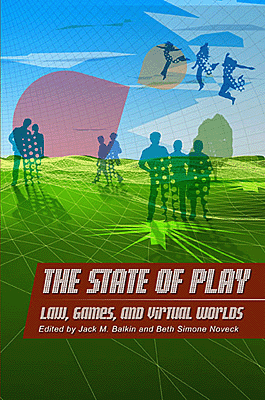
Jack M. Balkin and Beth Simone Noveck, The State of Play: Law, Games, and Virtual Worlds (N.Y.U. Press 2006)

Andrew Koppelman, Same Sex, Different States: When Same-Sex Marriages Cross State Lines (Yale University Press 2006)
Brian Tamanaha, Law as a Means to an End (Cambridge University Press 2006)
Sanford Levinson, Our Undemocratic Constitution (Oxford University Press 2006)
Mark Graber, Dred Scott and the Problem of Constitutional Evil (Cambridge University Press 2006)
Jack M. Balkin, ed., What Roe v. Wade Should Have Said (N.Y.U. Press 2005)
Sanford Levinson, ed., Torture: A Collection (Oxford University Press 2004)
Balkin.com homepage
Bibliography
Conlaw.net
Cultural Software
Writings
Opeds
The Information Society Project
BrownvBoard.com
Useful Links
Syllabi and Exams